22 Jul, 2024
Success in business depends on having an excellent IT staff. However, what is your method? Is hiring internally or externally preferable? Choosing between recruiting people internally and using augmented IT workers is one of the most important staffing decisions that firms must make. There are clear benefits and drawbacks to each strategy.
This blog will examine the distinctions between hiring IT staff augmentation and employing internal staff, go over the advantages of staff augmentation, and assist you in determining which is best for your company.
Understanding IT Staff Augmentation
IT staff augmentation is a strategic approach where you partner with a specialized service provider to supplement your existing IT team with skilled professionals. These professionals are typically hired on a contractual basis to address specific project requirements or fill temporary skill gaps.
One of the primary benefits of staff augmentation is its flexibility. You can quickly scale your team up or down to match fluctuating project demands without the long-term commitment of full-time employment. This agility is particularly valuable for businesses operating in dynamic industries or facing seasonal workload fluctuations.
Moreover, IT staff augmentation provides access to a vast pool of specialized talent. Finding skilled IT professionals with niche expertise can be challenging, especially in a competitive job market. By leveraging the services of a reputable augmentation provider, you can tap into a diverse talent pool and acquire the exact skills your project demands.
In-House Hiring: Building a Dedicated Team
In contrast to staff augmentation, in-house hiring involves recruiting and onboarding full-time employees to join your internal IT team. This approach offers greater control over your workforce and fosters a strong company culture.
Building an in-house IT team can be advantageous for long-term projects or when you require a high level of knowledge transfer and collaboration. By investing in employee development and training, you can cultivate a skilled and loyal workforce that aligns with your company's vision and values.
However, in-house hiring comes with significant time and resource commitments. The recruitment process can be lengthy and costly, and you must also consider factors like employee benefits, payroll, and ongoing training expenses. Additionally, building a team with the necessary skill set can be challenging, especially in specialized IT domains.
Comparing Staff Augmentation and In-House Hiring
To make an informed decision, it's essential to weigh the pros and cons of both IT staff augmentation and in-house hiring.
Staff Augmentation Advantages:
· Faster time-to-market: Quickly access specialized skills without the lengthy hiring process.
· Cost-effective: Pay only for the services you need, without the overhead costs of full-time employees.
· Flexibility: Scale your team up or down based on project requirements.
· Access to a wider talent pool: Tap into a diverse range of IT professionals.
Staff Augmentation Challenges:
· Potential for communication gaps: Managing remote or outsourced team members can be challenging.
· Less control over the workforce: Limited influence over employee performance and development.
In-House Hiring Advantages:
· Stronger company culture: Build a cohesive team aligned with your organization's values.
· Long-term knowledge retention: Develop in-house expertise and intellectual property.
· Greater control over the workforce: Direct management of employee performance and development.
In-House Hiring Challenges:
· Higher upfront costs: Recruitment, onboarding, and training expenses.
· Time-consuming: The hiring process can be lengthy and resource-intensive.
· Difficulty finding talent: Competition for skilled IT professionals can be fierce.
IT staff augmentation is an ideal choice for several scenarios:
· Short-term projects: When you need to quickly ramp up a project and don't require long-term staffing.
· Specialized skills: To access niche expertise that is not readily available in-house.
· Peak workload: To handle temporary increases in workload without overextending your existing team.
· Proof of concept: To test a new technology or business idea before making a long-term commitment.
In-house hiring is often preferred in the following situations:
· Long-term projects: When you need a dedicated team for ongoing initiatives.
· Core competencies: To build in-house expertise in critical areas of your business.
· Strong company culture: When you want to foster a cohesive team aligned with your organization's values.
· Intellectual property protection: To safeguard sensitive information and proprietary knowledge.
In conclusion, both IT staff augmentation and in-house hiring have their unique advantages and challenges. IT staff augmentation provides flexibility, access to specialized skills, and cost-effective solutions for short-term projects. On the other hand, in-house hiring offers long-term commitment, better cultural fit, and greater control over your workforce. By carefully assessing your project's needs, budget, and company culture, you can make an informed decision that best supports your business goals.
--------------------------------------------------------------------------------------
How does staff augmentation differ from in-house hiring?
Staff augmentation is temporary and flexible, while in-house hiring is permanent and involves a longer commitment.
Is staff augmentation cost-effective?
Yes, it can be cost-effective as it reduces long-term employment costs and recruitment expenses.
Is in-house hiring cost-effective?
It can be cost-effective in the long run if the employee provides continuous value to the company.
Is staff augmentation suitable for all business sizes?
Yes, it can benefit small startups to large enterprises needing temporary expertise.
Is in-house hiring suitable for all business sizes?
Yes, but it is particularly beneficial for businesses seeking long-term growth and stability.
How does staff augmentation support project-specific needs?
It allows businesses to quickly adapt to specific project requirements with the right skills.
How does in-house hiring support company-wide needs?
It ensures that all company functions are covered by a committed and cohesive team.
--------------------------------------------------------------------------------------
You May Also Read
How React and React Native Staff Augmentation Can Benefit Startups

